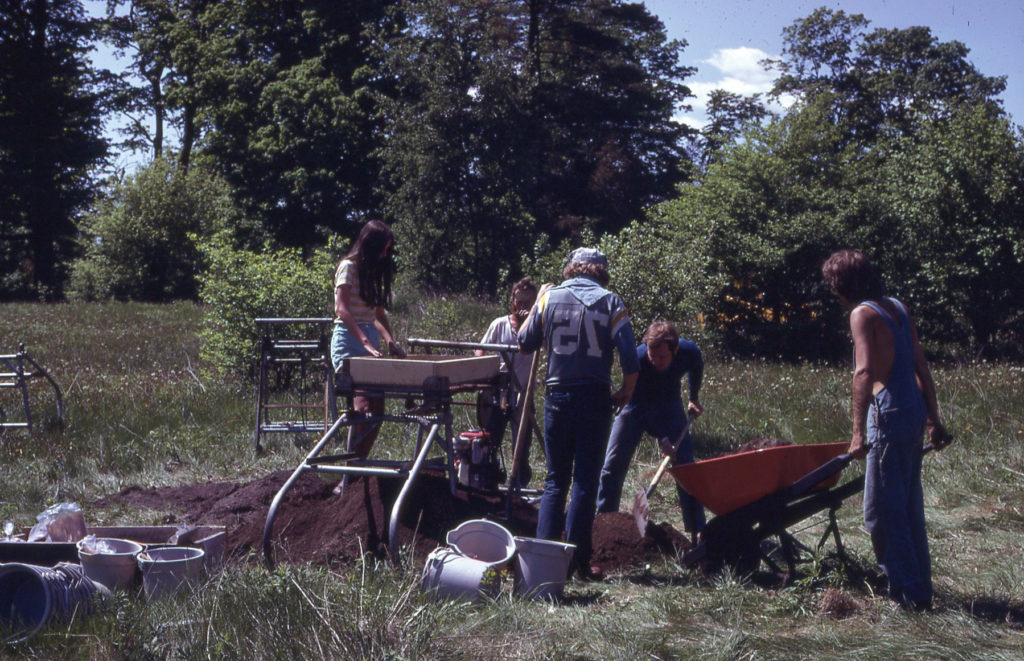
In my last two blog posts, Digging for Houses and Palisades Part 1 and Part 2, I discussed how we explored large areas of the Draper site to discover the remains of the longhouses and palisades which had been preserved in the yellow-brown subsoil. This represented about 85% of the area of the site excavated.
Another important goal of our investigations was to excavate the middens (garbage dumps) located across the site. On the ploughed parts of the land, specifically the South Field, which had been farmed for years, the middens were represented by significant quantities of artifacts. This was the case on the undisturbed part of the site as well, however, the soil here was found to be uniquely rich, black, and organic.

Our aim in digging these deposits was to collect enough artifact samples in order to make good, quality comparisons of the Draper site to other sites in south central Ontario, and between the different middens within the Draper site. I estimate that 80% of the 166,723 diagnostic artifacts and the almost 1.3 million gm of fragmentary pieces of pottery and animal bone remains were recovered from these midden deposits.
To dig these middens, we superimposed a grid of 1 x 1 m squares over the deposit and then dug these squares systematically. This included excavated trenches across the midden in one-metre squares in order to record profiles of the deposits which help us understand how they were made. These squares were dug by shovel and trowel, often in 10 cm levels.
The largest midden on the site was numbered Midden 52. We excavated close to 300 1 x 1 m squares in this midden. We experimented with a motorized conveyor system to carry the dirt to a hanging screen. As I recall, this piece of equipment was used by Dr. George MacDonald, of the National Museum of Man, in his exploration of archaeological sites on the west coast of Canada. However, it turned out not to be effective for our work. We also used mechanical screens to speed up the screening of the soils from these middens.

One of the fascinating discoveries of our excavations at Draper was that the occupants had created middens at the base of palisades surrounding the village and then had torn down those palisades and built longhouses on top where middens had been. This was part of the process of expanding the Draper site to incorporate more people into the village. It did result in contaminated deposits, and I will expand on this in my next blog.
For more on 19th Century Ontario archaeology, I invite you to check out The Archaeology of Patterson Village and The Archaeology of Five Queensville Farmsteads, the first two books in Our Lands Speak series. You’ll hear more about the third in the series later this fall.
Kindest regards,
Bill Finlayson
William D. Finlayson, Midland, Ontario
Ontario’s Leading and Senior-Most Archaeologist and Author
All rights reserved. The use of any part of this publication reproduced, transmitted in any form or by any means, electronic, mechanical, photocopying, recording, or otherwise, or stored in a retrieval system, without the prior written consent of the author and publisher is an infringement of the copyright law. To that end, every attempt has been made to give proper acknowledgement, and access appropriate permissions for quotes. Any oversights are purely unintentional. In the unlikely event something has been missed, please accept our regret and apology, and contact us immediately so we can investigate and rectify as needed. All of the quantitative factual information is recorded in various published and unpublished sources and can be provided upon request.
